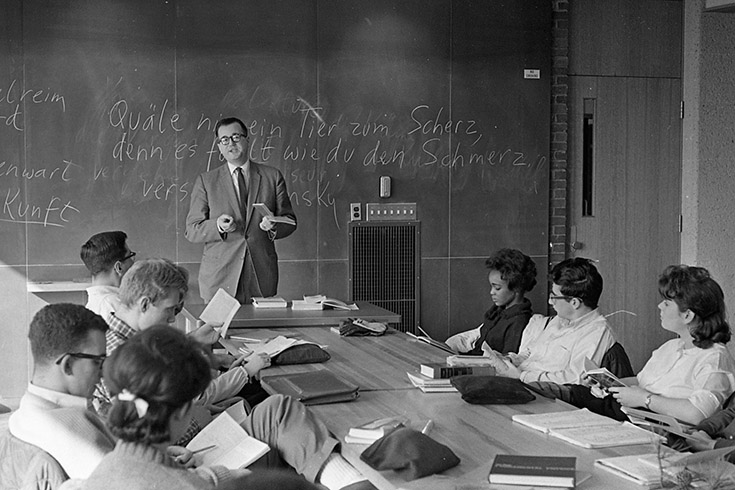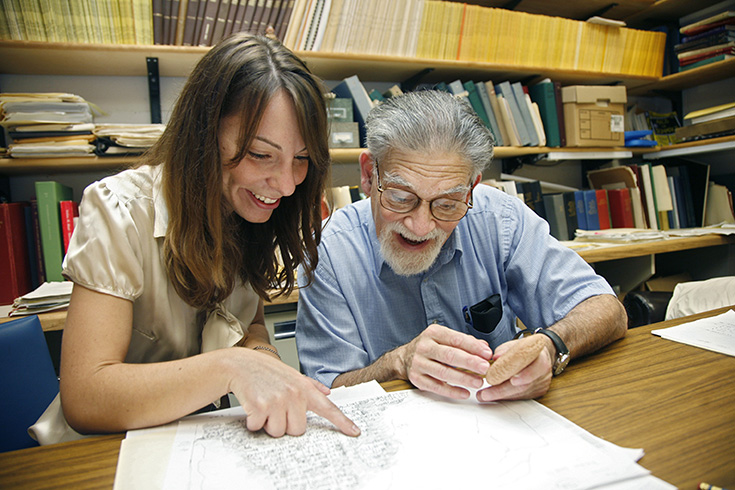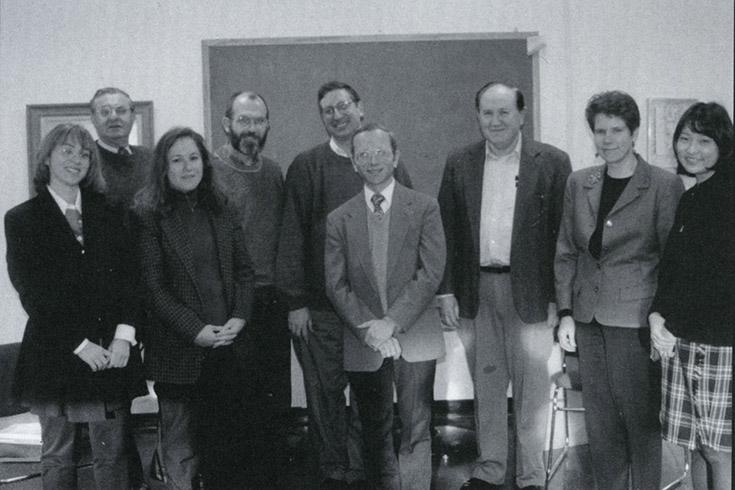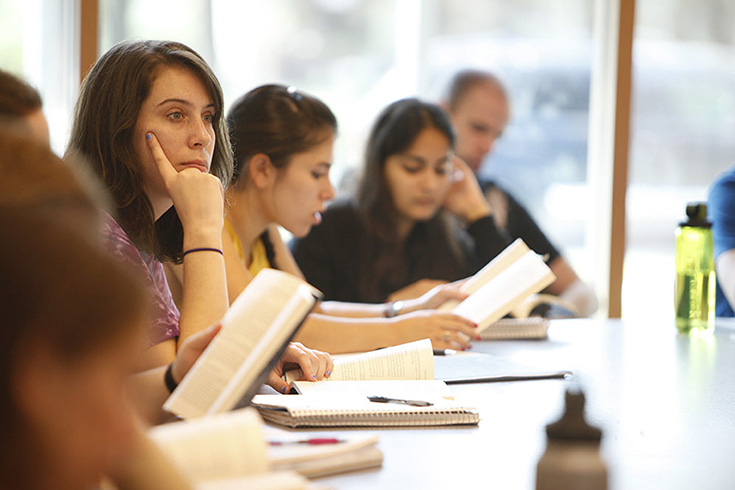Academic Timeline
 1948
1948
The first Judaism-focused courses were introduced in 1948 and were named “History of Jewish Civilization,” “Contributions of Jewish Culture,” and “Philosophy of Jewish Life.” The “History of Jewish Civilization” course in the History department taught about the history of Israel and the development of different ancient Jewish civilizations. The “Philosophy of Jewish Life” course was taught in the philosophy department and as the name suggests, it taught about the reasoning and the philosophy behind the different traditions and cultures that are a part of Jewish life. The “Contributions of Jewish Culture” course was also in the Philosophy department and it was a course that taught about the different ways Judaism influenced ideas in philosophy as well as in other cultures.
1949
The first comparative religions course was introduced in 1949 as “Comparative Religions” under the Social Science department. This course compared Islam, Judaism, and Christianity by observing the similarities and differences in their histories, religious texts, cultures, and civilizations.
1950
The first Christianity-focused course was introduced in 1950. The course was named “History of Christianity” and it focused on the history of how Christianity became a religion and how it spread throughout the world. It also talked about the different ways that Christianity infused itself in the founding of many cities and countries. In the same year, the first Islam-focused course was introduced as “The Islamic World from 632 to 1800.” As the title suggests, the course focused on the different ways Islam influenced the politics and culture of different Islamic states from 632 to 1800.
 1952
1952
Judaic Studies was added as a program of studies. This program was made in order to give students a more concrete and extensive curriculum on Jewish studies. This program would later become the NEJS department that is present today at Brandeis.
1953
The Judaic Studies program is renamed the Near Eastern and Judaic Studies (NEJS) program in 1953. The Near Eastern Civilization program was also created in this school year in order to give students a curriculum on the Near East that wasn't specifically focused on Judaism. The Near Eastern Civilization program had many course requirements from the NEJS program.
1955
The Near Eastern Civilization program was no longer listed under the course catalog and was removed as a program in 1955.
1956
Courses about religions originating from the East are first seen in this school year. Hinduism, Confucianism, Buddhism, Taoism, and Shinto are all introduced into the course catalog. Many of them are put into the History of Ideas program which becomes heavily populated by courses in religion this year.
1957
Courses about ancient religions are introduced to the curriculum in the “Primitive Religions” course. This course describes the different ancient religions, primarily polytheistic religions, that are not actively practiced anymore.
1958
“The Civilization of Ancient Aztecs and Mayas” course was first introduced in 1958 by the Anthropology department and was taught by Professor Miles. This was the first course to focus on the civilizations and religions based in the Americas and also taught students about the different art that emerged from those religions. In the same year, the “Conflict of Religions in the Roman Empire” course was introduced as a History of Ideas course taught by Professor Fischel. It was the first course at Brandeis to talk about Roman religion and it focused on the different conflicts between pagan religions within Christianity in Rome.
 1964
1964
Contemporary Jewish Studies is added as a graduate program in 1964. As the name of the program suggests, it was created in order to give an opportunity to graduate students to study contemporary Judaism through different courses and seminars as well as research guided by professors.
1966
The Civilization of the Ancient Near East course is introduced this year and is the first course to comparatively look at several different religions in the Ancient Near East. It also gave insight as to how religions played a role in the politics and everyday lives of people in these civilizations.
1969
The Benjamin S. Hornstein program was established. This program was created in order to give graduate students the resources and opportunities to be trained in the professional Jewish communal service field. It also connected them to a community of like-minded students and clergy to help them develop in their professional careers.
1972
A course specific to African religions is introduced as “An Introduction to African Religions and Philosophy.” This course introduced and explained the different traditional African religions like Yoruba, Akan, Nuer and Dinka and also described the role that Christianity and Islam played in Africa in the more recent years.
1976
The National Center for Jewish Film was founded with the goal of reviving and exhibiting Jewish art and culture by restoring Jewish films. It also was created to distribute and exhibit the art that they preserved.
 1980
1980
The Cohen Center for Modern Jewish Studies (CMJS) was created as a research institute. Its main focus was on the evolution as well as the preservation of the Jewish identity in several different settings. In the same year, the Tauber Institute for the Study of European Jewry was founded. The main goal of this institute was to research Judaism through a multidisciplinary lens and give students a forum to share their research ideas.
1981
The Islamic and Middle Eastern Studies (IMES) was added as a program of studies. This program wanted to give students a curriculum revolving around Islam and the different cultures and civilizations of the Middle East. The program at this time was just a mixture of Arabic language courses and some NEJS courses.
1990
The Kraft-Hiatt Chair in Christian Studies is established as part of a partnership with the College of Holy Cross.
1997
The Hadassah-Brandeis Institute (HBI) was founded in order to research in depth about the fight for women’s rights in the different legal, religious, and cultural systems. In 2002, the Jack, Joseph and Morton Mandel Center for Studies in Jewish Education was founded in order to research and promote the importance of Jewish education.
2005
In order to incorporate and create new ways of doing socio-demographic research on Jewish identity, the Steinhardt Social Research Institute (SSRI) was founded.
2009
The Brandeis-Genesis Institute for Russian Jewry was founded in order to try and connect the Russian-speaking Jewish community together while also promoting a higher understanding of Jewish life to native Russian Jews.
More information
- Read summary of “New Mid-East and Islamic Studies Minor Considered (PDF),” The Justice, 1982.
- Read summary of “Brandeis and Holy Cross Establish Joint Program in Comparative Religion (PDF),” The Justice, 1990.
- Read excerpt from “Expand the Religious Studies Program (PDF,” The Justice, 2012.